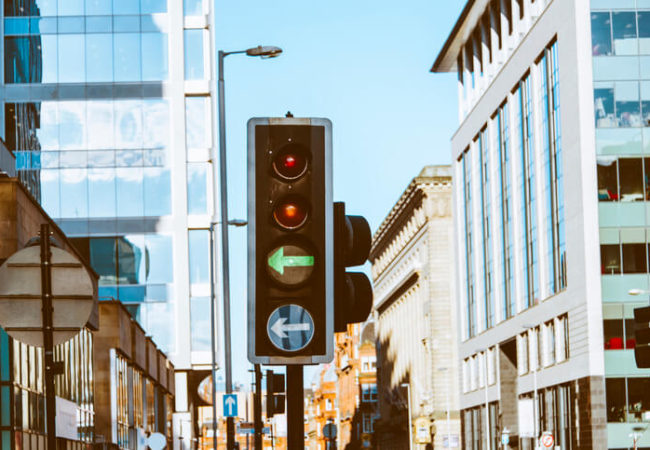

The practical driving test can be nerve-wracking. You’ve spent weeks, maybe even months, studying for the test and practising your driving. But even if you’re confident behind the wheel, there’s always a chance that you could fail. Here are the ten most common reasons according to gov.uk why people fail their driving tests and what you can learn from it.
This can include:
Helpful Hint: It’s always best to plan well ahead when approaching a junction. If it is an open junction (your view is not obscured by objects such as high walls or hedges), check what is coming from BOTH directions. Make sure you look RIGHT, LEFT, and RIGHT again, before driving out. You’re checking for oncoming traffic, cyclists, and pedestrians who might be crossing the street.
You did what?!: “When crawling towards a zebra crossing, I went a little too far forward and (gently) bumped into a pedestrian before the examiner could stop me. I then argued that it wasn’t my fault as he was fine, and that his outfit had made him blend into the stripes.”
This can include the following mistakes:
Helpful Hint: Check your mirrors regularly! The examiner will be looking to see if you’re checking your blind spots and making sure it’s safe to change lanes and exit roundabouts. Remember, whether on your test, or as a qualified driver, you must not cause other road users to SLOW, SWERVE or STOP.
You did what?!: “My dad taught me to drive and when it came to take my test, I didn’t know that I should be looking in the mirrors quite so often – I failed big time – perhaps because my lack of mirror checks meant I nearly drove us straight onto a busy roundabout at exactly the wrong time.”
Errors in this category include:
Helpful Hint: It is good practice to use the pull-push steering technique that you have been shown in your driving lessons, which reduces the chances of losing steering control. While crossing your arms on a driving test will not cause you to fail, it will result in a fault. Why? Because most people tend to lose full control of the wheel when they cross their arms.
Fact: A road collision report by gov.uk found that 1 in 10 reported accidents in 2019 were caused by the driver making a poor turn or manoeuvre.

Mistakes in this area include:
Helpful Hint: Many learner drivers will drive in the left lane in a one-way street, forgetting that it is actually one-way! Remember you can use either lane in a one-way street.
You did what?!: “I turned left when told to turn right (twice), and lied to the examiner that I had dyscalculia, which affected my ability to turn left or right.”
Faults on your driving test can occur for the following reasons:
Helpful Hint: Most commonly, this is not looking into the roadside (offside) blind spot before moving away. Remember to turn your head and check that blind spot before moving off.
You did what?!: “I thought a line of parked cars was a line of traffic waiting for the traffic lights to change. After seven excruciating minutes of waiting, the instructor asked me to drive around the parked cars.”
Common driving mistakes in this section include:
Helpful Hint: As you approach traffic lights it is a good idea to reduce your speed a little and be prepared to stop before the white line. Remember that if the lights change to amber, you should still stop, unless there’s a real risk of causing an accident.
Fact: There were 1,308 reported accidents in 2019 caused by drivers disobeying traffic lights according to a report by gov.uk.

You will incur faults in your test if you:
Helpful Hint: This is a very common fault, especially on driving test routes with multiple roundabouts. Be sure not to ‘cut across’ the roundabout, but follow the appropriate lane completely around the roundabout. Often this fault arises on approach to roundabouts where the left lane curves round at the roundabout. The candidate is still looking right and does not steer the car with the curve, but remains straight, causing them to straddle the white lane division lines.
You did what?!: “I failed my test the first time round because I thought the way to overtake was to zip in and out of traffic like in a car chase – the only background knowledge I had was taken from James Bond, so I blame the movies! Looking back, I can definitely see why it was so important for me to take more lessons.”
Common driving mistakes in this section include:
Helpful Hint: Whether on a driving test or when qualified, never break the speed limit or travel too fast into a hazard. Remain at a speed that allows you to judge the situation effectively. This also applies to driving slowly all the time. One of the most prevalent myths about the driving test is that “if you drive slowly, you’ll pass.” In truth, driving consistently well under the speed limit is just as dangerous as speeding.
You did what?!: “I tried to turn the wrong way up a one-way street, and then blamed the instructor for putting me off!”
This can include:
Helpful Hint: Not reaching the crucial bite point of the car – particularly on a hill – is a common mistake that new drivers make. Be sure to keep your handbrake on when reaching the bite point to avoid rolling back. Remember to also mirror, signal, manoeuvre before moving off.
Fact: There were 942 reported accidents caused by driver error when moving off at junctions in 2019 gov.uk.
You will incur faults in your test if:
Helpful Hint: Take the reversing exercises S-L-O-W-L-Y! Many candidates fail to see traffic approaching from behind them, in the road they are turning into or they swing the car out causing an obstruction to oncoming traffic. Keeping at a slow but steady speed will enable you to judge the reverse park manoeuvre appropriately.
You did what?!: “I drove out of the test centre on the wrong side of the road (to be fair, it was a very narrow road). I told the examiner that I had just got back from France, where I had become so immersed in the culture that I’d forgotten which side of the road to drive on.”

RED Driving School is one of the UK’s largest driving schools. Teaching in excess of 100,000 learner drivers to pass the UK government driving test each year. With driving lessons from RED, you’ll be fully prepared for your LPDM (learner plate disposal moment)!